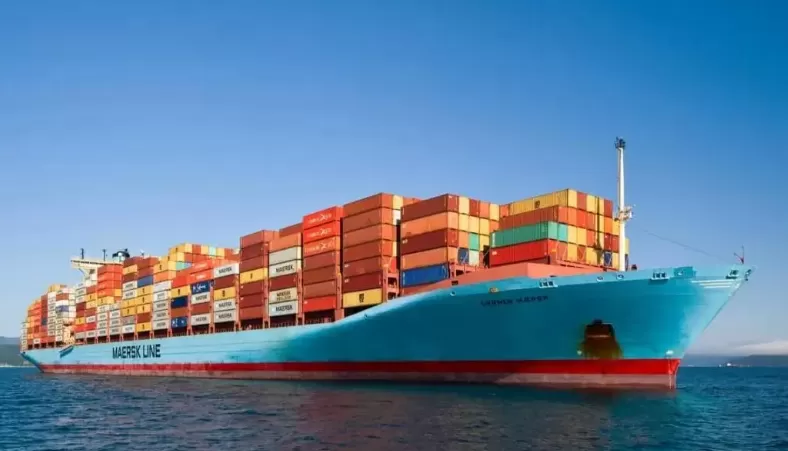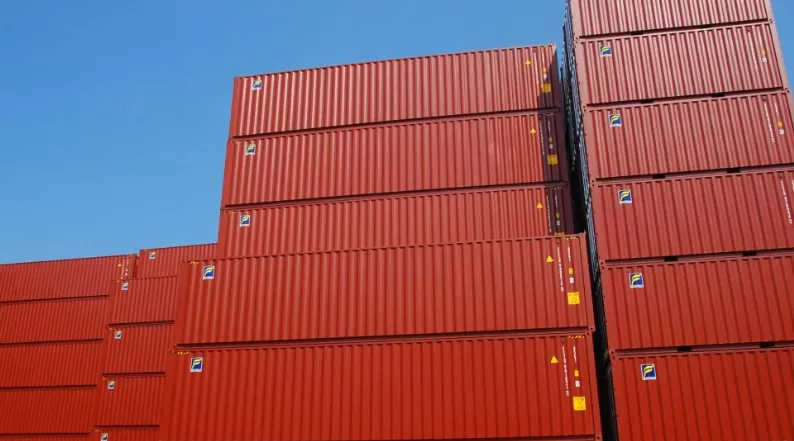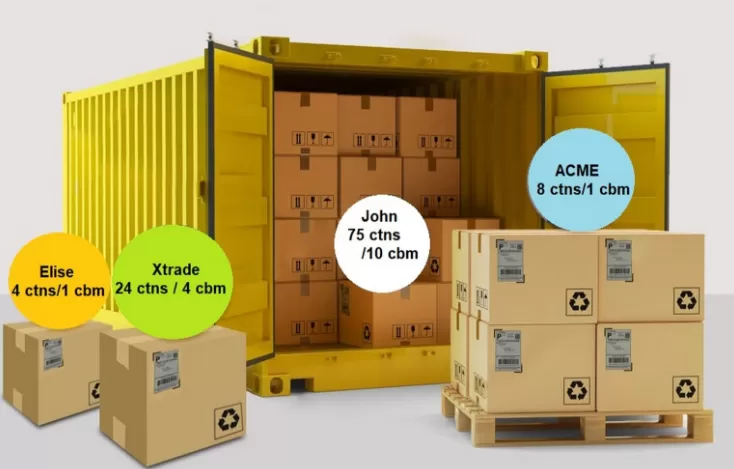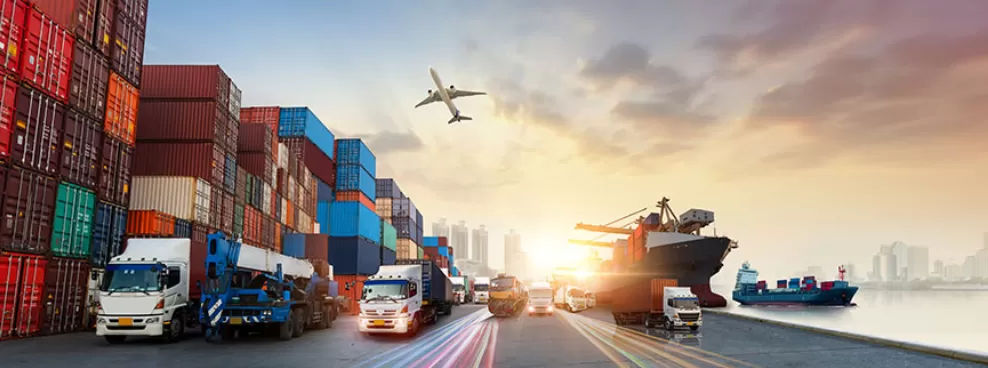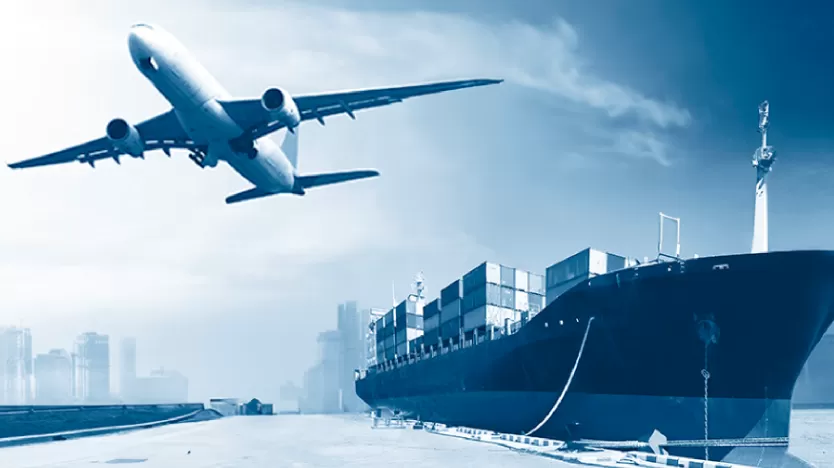Here’s the thing — shipping from China to Lille isn’t a single product you buy off a shelf. It’s a set of tradeoffs: speed vs cost vs risk. I’ll walk you through every option (air, sea FCL/LCL, express, sea-air, sea+truck), show how pricing works, give real calculation formulas you can use, show typical transit windows, list major routes, explain delays and how to avoid them, and finish with practical, execution-level tips for Amazon FBA sellers and small importers. Read the sections you need — everything is written so you can act on it.
Are you ready?
Get real-time quotes for Lille
Get Quotes
Quick highlights (TL;DR)
Fastest: Express (small parcels) or air freight (100–200 kg). Expect door-to-door in days rather than weeks.
Cheapest per unit: FCL (full container) sea freight when you’re near container capacity.
Best for small, cost-sensitive shipments: LCL (less than container) or sea+truck (sea to EU hub + road to Lille).
Common choke points: port congestion, missing documents (EORI/VAT), and seasonal peaks. Plan paperwork early.
For Amazon FBA & small sellers: use consolidated express for samples, air for replenishment, and FCL/LCL for steady sales.
Table of contents
Overview: modes and where they fit
Air freight (100 kg / 200 kg) — deep dive
Sea FCL — 20’, 40’, 40’HC, 45’HC (how to think about containers)
Sea LCL — 1 m³ / 5 m³ / 10 m³ (practical advice)
Express examples — 10 kg / 120 kg use cases
Sea-air, sea+truck, and multimodal options
Typical transit times to Lille (by mode)
Major shipping routes & port choices (how shipments usually move)
Pricing: cost components and how to calculate chargeable weight
Example pricing calculations (templates you can reuse)
Delays: common causes and mitigation
Choosing fastest vs cheapest — decision grid
Amazon FBA & small-seller playbook for Lille/France
Freight forwarder checklist & negotiation talking points
20 practical tips to cut cost and save time
FAQ (short, practical answers)
Conclusion & next steps (what to do now)
1) Overview — Modes and when to use them
Let’s break it down simply:
Express (courier) — best for 1–50 kg samples, urgent B2C parcels. Fast, traceable, but most expensive per kg.
Air freight — best for 100–200 kg and up to a few pallets. Faster than sea, still expensive but cost per kg drops as weight rises. Good for replenishment when lead times matter.
Sea FCL (full container) — best when your shipment fills (or nearly fills) a 20' / 40' container. Lowest unit cost at scale.
Sea LCL (consolidation) — best for small volumes when you can’t fill a container. More handling, longer transit, additional origin/destination consolidation fees.
Rail / Intermodal — sometimes competitive (China → Europe rails), good for medium speed and cost; routing matters.
Sea-air / Sea+truck — hybrid options to balance cost and speed: sea to a hub + air/road final leg.
2) Air freight (100 kg / 200 kg) — detailed practical guide
When to pick air: you need goods fast (replenishment, seasonal demand), or items are high value / low volume.
Key operational points
Typical routing for Lille: origin airport (Shanghai PVG, Shenzhen SZX, Guangzhou CAN) → Paris CDG/ORY or Brussels BRU → truck to Lille.
Door-to-door service usually involves airway bill (AWB), customs clearance, and last-mile trucking. Expect 5–10 calendar days door-to-door in normal conditions if no delays.
Import tip: arrange customs clearance and VAT registration (EORI number for EU) beforehand to avoid delays at arrival.
Pricing mechanics & units
Airlines and forwarders charge either by actual gross weight or volumetric weight — whichever is higher.
Volumetric (air) formula:
Volumetric weight (kg) = Volume (m³) × 167
Example: if your cargo is 2.0 m³ → 2.0 × 167 = 334 kg (so you’ll be charged for 334 kg if that exceeds actual weight).
Why 167? It’s the industry standard for air freight: 1 m³ ≈ 167 kg of volumetric weight.
Practical advice for 100 kg vs 200 kg
100 kg: cost per kg is high — compare with express options for small urgent shipments. Negotiate minimal surcharges and consider consolidators.
200 kg: unit rate falls; air becomes more economical versus urgent multi-parcel express. Ask forwarder for pallet rates (EUR/kg or USD/kg).
Typical surcharges to expect
Fuel surcharges (BAF), security, terminal handling (TCH), AWB fee, customs brokerage, and storage if delayed. Always request a landed (door) quote, not air-only.
3) Sea FCL — containers: what you need to know
When to pick FCL: you can fill or nearly fill a container, or want less handling and lower risk of damage.
Containers at a glance (approx. internal volumes)
20' GP (general purpose): ~33 m³ internal volume — good for dense goods.
40' GP: ~67 m³.
40' HC (high cube): ~76 m³.
45' HC: ~86 m³ (used by some shippers for extra volume).
(Volumes are approximate — always check your packer’s actual usable volume.)
Cost logic
FCL pricing is route + container type + port handling. If your goods have high density (heavy per m³), weight limits matter; if low density (bulky, light), you may hit the container’s volume before weight.
Transit and door logistics
Ship to a major North Sea port (Rotterdam, Antwerp, Le Havre, Dunkirk), then truck to Lille. Door-to-door time typically 28–45 days from major Chinese ports, depending on schedule and transits.
Port selection matters: Rotterdam/Antwerp often have better schedule frequency; choosing a closer port to Lille can reduce trucking cost.
Operational tips
Ask forwarder for TEUs availability and blank sailings schedules (seasonal changes can delete sailings).
Consider FCL if your cargo volume > ~15–18 m³ for a 20' depending on product density — run the math.
4) Sea LCL — consolidation for 1 m³ / 5 m³ / 10 m³
When LCL is right: you have under-container loads (1–10 m³) and timing is flexible.
How LCL pricing works
LCL is charged per cubic metre (m³) or by chargeable weight (whichever higher) and includes consolidation/delconsol fees, origin terminal handling, ocean freight share, destination handling (THC), customs, and last-mile delivery.
Typical breakpoints: 1 m³ (sample box), 5 m³ (small palletized consignment), 10 m³ (larger small shipment). As volume increases, at some point FCL becomes cheaper.
Risks & extra costs
More touchpoints = higher risk of damage and longer dwell times. You’ll pay additional pick-up/delivery and documentation fees.
LCL shipments are grouped by commodity and destination — if your boxes are bulky or odd shapes, they attract extra charges.
Loading & packaging
Consolidator tip: palletize and shrinkwrap. Use standardized pallets (EUR pallet) if possible — it reduces handling fees.
Label every carton, include full commercial invoice and packing list, and send docs to forwarder 48–72 hours before vessel ETD.
5) Express / courier (10 kg / 120 kg) — when to use and how to price
Use case: small B2C parcels, urgent samples, or FBA small shipments.
Typical courier rules
Express carriers use volumetric divisor for chargeable weight. Common formula for express (courier):
Chargeable weight (kg) = (L × W × H in cm) / 5000
Example: a box 50 × 40 × 40 cm → (50×40×40)/5000 = 1600,000/5000 = 32 kg.
Couriers bill by piece until you hit palletized shipments. For 120 kg, many carriers move you into freight/pallet rates which are cheaper per kg.
Operational notes
Door-to-door tracking and customs clearance often included, but brokerage fees may apply.
For FBA: check Amazon's carton labeling and pallet requirements — couriers can offer FBA door-to-dock services but confirm cutoffs.
6) Sea-air, sea+truck, and multimodal options
What they mean in practice
Sea-air : Goods go by sea for the long leg, then air for the final leg — cost between sea and air, reducing final leg time. Good when port congestion delays longer sea legs but you still want faster final delivery.
Sea+truck : Sea to a major EU port, then trucking to Lille. This is a common, cost-effective approach: ocean legs on cheaper strings, short road haul to Lille.
When to use them
If you want a middle ground: save money on ocean for bulk distance and speed up last mile to avoid long LCL consolidation times. Common for buyers in Northern France and Benelux.
7) Typical transit times to Lille
(These are typical windows — actual times vary with schedule, season, and handling.)
Express (small parcels): 2–7 days door-to-door.
Air freight (door-to-door): 5–10 days.
Rail (China → Europe + truck to Lille): 18–28 days (depending on route & transits).
Sea FCL (China port → EU port → truck to Lille): 28–45 days.
Sea LCL (including consolidation): 35–55 days.
Sea-air / sea+truck hybrids: 18–30 days.
8) Major routes & port choices (how shipments usually move)
Common origin Chinese ports: Shanghai (SH), Ningbo (NB), Shenzhen/Shekou (SZX), Yantian (YTN), Qingdao (QDG), Guangzhou (CAN).
Common EU entry ports for Lille shipments: Rotterdam (Netherlands), Antwerp (Belgium), Le Havre / Dunkirk / Calais (France), Zeebrugge (Belgium).
Routing logic: choose the port with
best schedule (frequency),
competitive ocean rates,
shorter inland trucking to Lille.
Example good combos for Lille: Antwerp/Rotterdam (shorter truck lanes); Le Havre/Dunkirk useful when French customs/time matters.
9) Pricing — cost components and chargeable weight rules
Main cost buckets
Ocean/air freight (carrier rate)
Origin charges: local haulage, documentation (DC), terminal handling (OTH), consolidation.
Surcharges: BAF (fuel), CSF (currency), Peak Season Surcharge.
Destination charges: terminal handling (DTHC), customs clearance, inspection, delivery to consignee.
Taxes & duties: VAT, customs duty (based on HS code and CIF value).
Insurance (advised; cargo insurance based on CIF value).
Chargeable weight rules
Air: chargeable = max(actual weight, volumetric weight) with volumetric weight = m³ × 167.
Express (courier): often chargeable = max(actual weight, (L×W×H cm)/5000).
Sea: charged by container or by m³ for LCL.
Tip: always request a landed cost quote that includes duty and VAT so you know total landed cost to Lille.
10) Example pricing calculations
Here are reusable examples. Replace the placeholder rates with real quotes.
Example A — Air freight (hypothetical)
Shipment volume = 2.0 m³. Using air volumetric rule: 2.0 × 167 = 334 kg (volumetric weight).
If actual weight is 180 kg, chargeable weight = 334 kg.
If your forwarder rate is USD 4.50 / kg (example only): Freight = 334 × 4.50 = USD 1,503.
Add origin fees USD 120, destination fees USD 180, customs clearance USD 80 → Total approx USD 1,883 (door).
(You must get live rate from forwarders; this is calculation method only.)
Example B — LCL (hypothetical)
You ship 5 m³. Forwarder rate = USD 120 / m³ (example). Ocean = 5 × 120 = USD 600.
Add consolidation fee USD 80, origin THCs USD 70, dest THCs USD 150, customs clearance USD 80, trucking to Lille USD 220 → Total ≈ USD 1,200.
Compare to a 20' FCL cost estimate — if a 20' costs USD 1,600 landed and you’re shipping 10 m³, per m³ = USD 160; LCL at USD 120/m³ might still be cheaper until you approach FCL break point.
11) Delays — real causes and how to reduce risk
Common causes
Blank sailings / reduced sailings during slow seasons or schedule changes.
Port congestion and container stacking delays.
Incorrect or missing paperwork — e.g., no EORI, missing commercial invoice, wrong HS code.
Customs inspections / phytosanitary checks.
Weather & force majeure.
Mitigation
Submit documents early (48–72 hours before departure).
Use an experienced customs broker familiar with French import rules.
Build buffer time into replenishment planning (safety stock).
Consider alternative ports or routing when congestion signals appear.
Buy appropriate cargo insurance and check Incoterms (DAP vs DDP).
freight forwarding
Get real-time quotes for Lille
Get Quotes
12) Choosing fastest vs cheapest
You need stock in 7–10 days: Air freight or express.
You need lowest per unit cost and can wait 30–45+ days: FCL.
You have irregular small shipments: LCL or consolidated LCL (set up monthly consolidation).
You ship to Amazon FBA and want predictable slots: use a forwarder with FBA experience and plan early — don’t rely on last-minute LCL.
13) Amazon FBA & small-seller playbook (Lille / France)
Small crates / samples: express (courier) to FBA is quick and low friction.
Replenishment: air for urgent restocks; LCL for cheaper replenishments if you have buffer stock.
FBA compliance: labels, carton content, box dimensions — follow Amazon’s rules strictly to avoid refusal or removal fees.
VAT & EORI: sellers must handle VAT registration or use an EU fiscal representative. Misreporting is a top cause of delivery hold-ups.
Do you have experience shipping to Lille and handling French customs?
Can you provide door-to-door quotes including customs, VAT, and duties?
What is your insurance offering and claim track record?
Do you operate FCL, LCL, air, and express — or subcontract? Who is responsible for delays?
What are your payment terms and validity of rates?
How do you handle peak season and blank sailings?
Can you provide references for similar clients (Amazon FBA / small importers)?
What tracking and exception notification systems do you use?
Bring these questions to suppliers and compare not just price but process clarity.
15) 20 practical tips to cut cost and save time
Consolidate shipments where possible — fewer shipments = lower per-unit admin and handling.
Negotiate long-term rates if you ship regularly.
Optimize packaging to reduce volumetric weight.
Use standard pallet sizes (EUR pallet) to lower handling fees.
Choose the right port (Rotterdam/Antwerp often cheaper for Lille trucking).
Book earlier in peak season — capacity is limited.
Pre-clear customs when possible to speed up release.
Avoid unnecessary insurance gaps — underinsurance costs more in claims.
Use freight forwarders with FBA experience if shipping to Amazon.
Compare sea+truck vs direct trucking — shorter sea legs + truck can save time.
Audit your HS codes — a wrong code = wrong duty + delays.
Plan for returns — returns logistics save money long term.
Use a freight forwarder that provides landed cost quotes.
Use multi-origin consolidation for smaller suppliers.
Stack orders to fill containers periodically rather than many LCLs.
Negotiate number of free days at destination terminal to avoid demurrage.
Check carrier schedule reliability historically.
Use intermodal rail if time-sensitive but cheaper than air.
Monitor spot market and consider contracts — spot spikes can double costs.
Keep an emergency freight budget for urgent replenishments.
16) FAQ
Q1: How much does it cost to ship from China to Lille?
A: It depends — air is charged per kg (or volumetric kg); sea is per container or per m³ for LCL. Use the calculation templates above and always request landed quotes that include duties and VAT.
Q2: How long does China→Lille take?
A: Express 2–7 days; air 5–10 days; rail 18–28 days; sea FCL 28–45 days; LCL 35–55 days.
Q3: When should I choose LCL vs FCL?
A: LCL if volume < half container and you can accept longer transit. FCL if you can fill (or nearly fill) a 20' or 40' and want lower unit cost and fewer touchpoints.
Q4: What is volumetric weight?
A: For air: m³ × 167 kg. For courier: (L×W×H cm)/5000 kg. Carriers charge the higher of actual vs volumetric weight.
Q5: What paperwork causes the most delays?
A: Missing EORI, incorrect HS code, incomplete commercial invoice, missing packing list, or absence of required certificates (e.g., phytosanitary).
Q6: What ports should I choose?
A: Rotterdam/Antwerp for frequency and trucking lanes; Le Havre/Dunkirk for French handling. Balance cost vs door haul distance.
Q7: How do I ship to Amazon FBA in France?
A: Use a forwarder experienced with Amazon. Pre-label, follow carton rules, confirm pallet dims/placement and EORI/VAT requirements.
Q8: Is rail a good option to Lille?
A: Rail is a solid middle ground for lead time vs cost. You’ll often land in Duisburg/Poland and finish by truck. Check total door time.
Q9: Should I insure my goods?
A: Yes. Marine insurance protects against most losses and is inexpensive relative to cargo value.
Q10: What’s the best way to handle returns?
A: Set a local returns hub in EU if volumes justify it; otherwise use DDP return labels and a courier partner.
17) Conclusion — what to do next
Let me make this simple: if you ship occasionally with small, urgent orders — use express/air and pick a forwarder who handles FBA and customs. If you ship regularly and have bigger volumes, build a cadence: consolidated LCL or FCL with a forwarder you can trust, and automate documentation (invoices, packing lists, HS codes). Always get landed cost quotes and build in safety stock for seasonal spikes.
If you want, I can:
Draft a custom landed cost spreadsheet using your SKU list (you upload weights/dimensions and I’ll produce an actionable Excel); or
Write the “Air freight 100kg/200kg” section as a standalone page optimized for search; or
Create a downloadable rate calculator template (CSV/Excel) prefilled with the formulas we used above.

 EN
EN
 FR
FR
 ES
ES
 JA
JA
 PT
PT
 RU
RU
 AR
AR
